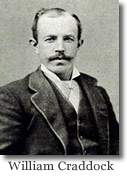 It wasn’t long before the prospectors were panning in the stream running through Gold Bug Park following the gold discovery in Coloma on January 24, 1848, only eight miles away. Big Canyon Creek was rich in gold for those early prospectors who could just pluck the gold from the stream.
It wasn’t long before the prospectors were panning in the stream running through Gold Bug Park following the gold discovery in Coloma on January 24, 1848, only eight miles away. Big Canyon Creek was rich in gold for those early prospectors who could just pluck the gold from the stream.
Several prospector huts lined Big Canyon Creek during the early years of the Gold Rush. Every spring the streams and rivers througout the Mother Lode produced a new crop of gold into the river bottoms. It was coming from the quartz veins outcropping into the streams and being washed away.
Once the panning operations were not turning up much gold, hard rock mining came into being. In 1860 hard rock mining was established throughout the area and small mining companies and miners were digging their own drifts following the veins into the sides of the hills.
 Picture of William Craddock, first owner of Gold Bug Mine.
Picture of William Craddock, first owner of Gold Bug Mine.
In 1888, The Hattie Mine was opened by William Craddock and John Dench. The Hattie, so named after Craddock’s eldest daughter, was first established across the canyon. However, it played out. The larger vein structures were noted on the south side of the canyon and a new drift was started. They followed the vein well back into the mine before circumstances dictated a sale.
John McKay took over in 1926 and turned at an angle to search for a more prominent vein structure. What you see today is the result of his work. Tracks were laid for the ore cars to assist in the removal of the ore. The ore was then taken outside and run through a crusher to extract the gold.
The air shaft was probably established to provide clean air for the workers to work in the mine. After a day’s work it would take 24 hours for the air to exchange so the men could start to work again. It is believed that no more than 2-3 men worked the mine at a time.
It is not known how much gold was removed! No records were kept. During World War II the mines throughout the Mother Lode were closed by order of the President as gold mining was considered a non-essential industry and men were needed to go to war.
The last owner of the four mining claims of the park area was held by William Meagher who owned the Independent Iron Works in Oakland, CA. He spent many hours working the mines and the area to keep his title on the property. His family always came with him and spent time swimming behind the dam he created on Big Canyon Creek, and hiking in the area while he worked. He built a summer cabin which still exists today at the end of the road. The Gold Bug Park Committee plans to turn the building into an nature center describing the flora and fauna of the area. (Learn how you can support the Meagher House project.)
Because the mining claims were no longer worked or expanded, the Bureau of Land Management took over the land as public property. In the early 1960’s the federal government under the Recreational Use Purposes Act leased properties to government entities for just that – recreational use. In 1965 the City of Placerville received the lease with the promise that the land would not be sold, divided or used for any other purpose than recreation. Under a 25 year lease agreement the City prepared to create a park.
In April 1980, Hangtown’s Gold Bug Park Development Committee, Inc, was formed to clean up, protect and defend the property for public use.
On February 1, 1985, the park was approved for listing in the National Register of Historic Places and also as a State Point of Interest on the California registry.
Gold Bug Park is now owned and operated by the City of Placerville. The City of Placerville is the only municipality in the state of California to own a gold mine. Today, you can step back in time to the mid 1800’s and experience what it was like to be a miner in the gold rush era.